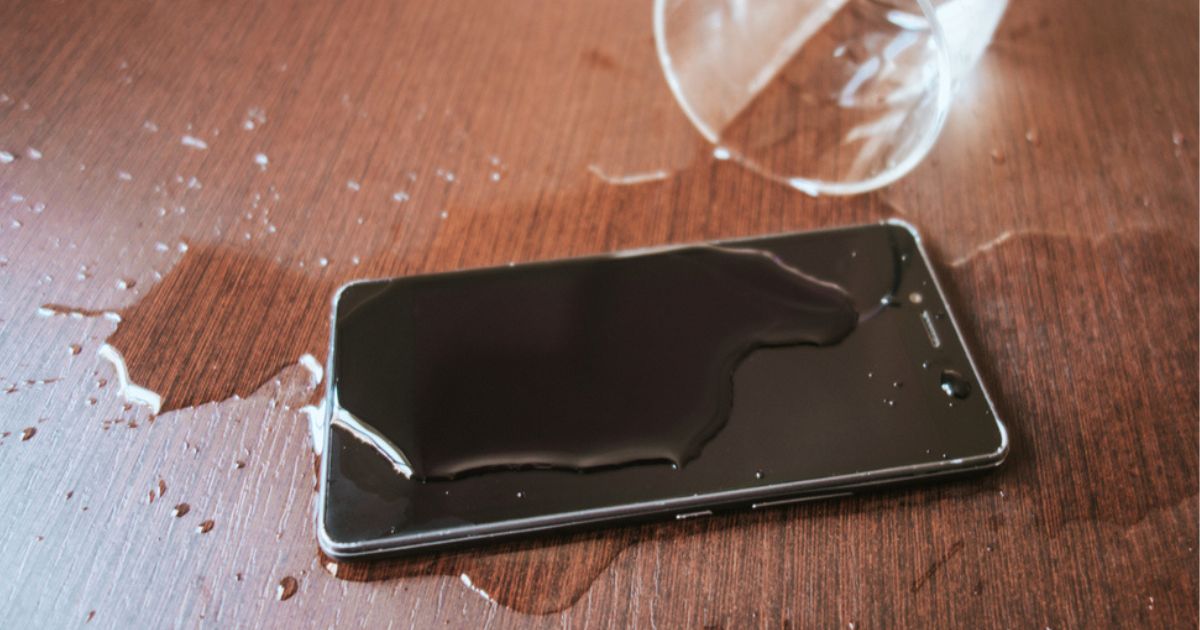How to Remove Water Inside a Phone Screen
To remove water inside a phone screen, begin by quickly taking the device out from the water and powering it off to prevent electrical damage and water damage. If possible, disassemble the phone, remove any removable parts, and carefully dry it using a soft, absorbent cloth. Use a vacuum cleaner to extract water from complex areas and place the disassembled phone in a bowl of silica gel packs for efficient moisture absorption.
Alternatively, air-dry the device on a windowsill or under a desk lamp while avoiding excessive heat. Isopropyl alcohol can be used to displace water, but ensure the phone is completely dry before attempting to power it on.
If these DIY methods fail, seek professional assistance for a thorough assessment and potential repair.
8 Ways to Remove Water Inside a Phone Screen
Take it out from the water:
The first step is crucial – act quickly. Retrieve your phone from the water as soon as possible to minimize water damage. The longer it stays submerged, the higher the risk of irreparable harm. Be gentle but swift; delicately pick it up, ensuring not to press any buttons that might force water further into the device.
Cut the power of your phone:
Prevent further damage by powering off your phone immediately. Water and electricity don’t mix well, and keeping the phone on can lead to short circuits. If possible, remove the battery to eliminate any potential electrical issues. If your phone doesn’t have a removable battery, power it down using the standard shutdown procedure.
Take all of the pieces off (if possible):
Disassemble your phone to the extent that you feel comfortable. Remove the SIM card, memory card, and any other removable parts. This helps to ensure that water doesn’t get trapped in hidden corners.
However, if your phone doesn’t have easily removable parts, skip this step to avoid causing additional damage.
Dry the phone:
Now that you’ve removed the phone from the water and powered it off, it’s time to dry it. Gently shake the device to expel any excess water. Avoid aggressive shaking, as it can cause internal components to shift. Use a soft, absorbent cloth to pat the phone dry. Be cautious and thorough, especially in areas where water might be trapped.
Vacuum:
For a more meticulous approach, employ a vacuum cleaner to extract water from the nooks and crannies of your phone. Carefully use the vacuum nozzle to draw out moisture from openings like the charging port, headphone jack, and speaker grills. This method is effective in removing water that may be difficult to access manually.
Silica Gel Packs:
Silica gel packs are excellent at absorbing moisture. Place your disassembled phone in a bowl or bag filled with silica gel packs. The gel will help to absorb the remaining water inside the phone. Give it ample time, preferably 24-48 hours, for the silica gel to work its magic. This is one of the best methods to remove water from your damage phone screen.
Desk lamp or windowsill:
Speed up the drying process by utilizing gentle heat. Place your disassembled phone on a windowsill or under a desk lamp, ensuring it’s exposed to indirect heat. Be cautious not to expose the device to excessive heat, as it can damage internal components. Allow the phone to air-dry for at least 24 hours.
Alcohol:
Isopropyl alcohol can help to displace and evaporate water. Submerge your phone in a bowl of isopropyl alcohol, as it has a lower surface tension than water, allowing it to penetrate the device more effectively. Afterward, let the phone air-dry completely before attempting to power it on.
If all else fails, seek professional help:
If, despite your best efforts, you’re unable to remove water if it seeped into your phone screen, it’s time to seek professional assistance. A certified technician can assess the extent of the damage and implement advanced solutions to salvage your device. Trust us at the best mobile phone repair shop in Chelmsford, UK, to provide expert services tailored to restore your device to its optimal condition, ensuring swift and reliable repairs.
Conclusion:
Acting swiftly and following these steps to remove water from inside your phone screen can significantly increase the chances of saving your phone from water damage. Remember, patience is key – give your phone ample time to dry before attempting to power it on. Prevention is always the best solution, but in the event of an accident, this comprehensive guide should equip you to handle water inside your phone screen effectively.
Frequently Ask Questions:
Q1: Can I use a hair dryer to remove water from my smartphone’s screen?
A1: It’s not recommended. The heat from a hairdryer can cause more harm than good by potentially damaging internal components. Stick to gentler drying methods like air-drying or silica gel packs.
Q2: Should I use rice to absorb water from my phone?
A2: While rice is commonly suggested, it’s not the most effective method. Silica gel packs are a better alternative as they have higher absorbent properties and won’t leave residual particles in your phone.
Q3: How long should I wait before attempting to turn on my phone after water exposure?
A3: Ideally, wait at least 24-48 hours before attempting to power on your phone. Rushing can lead to irreversible damage.

